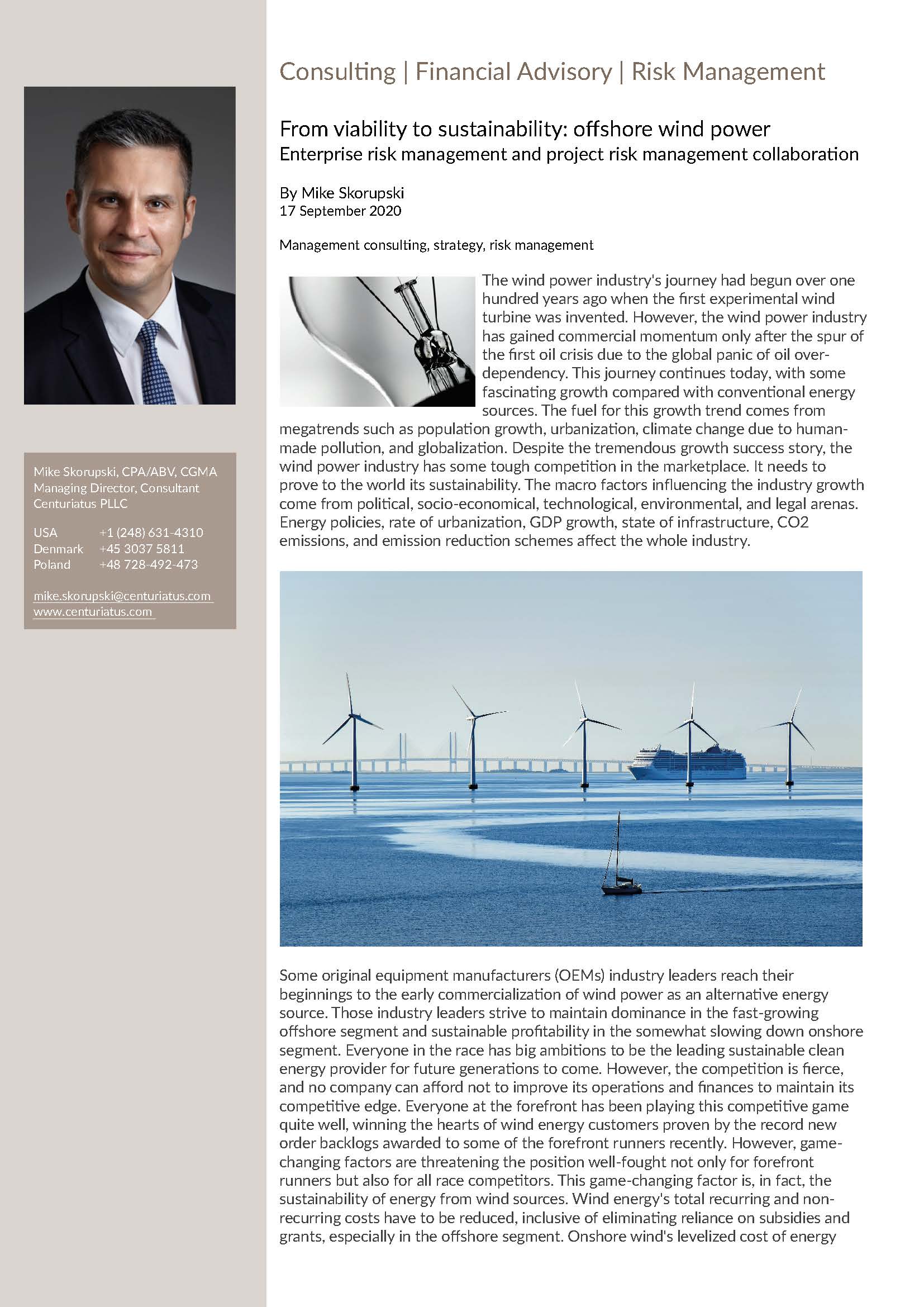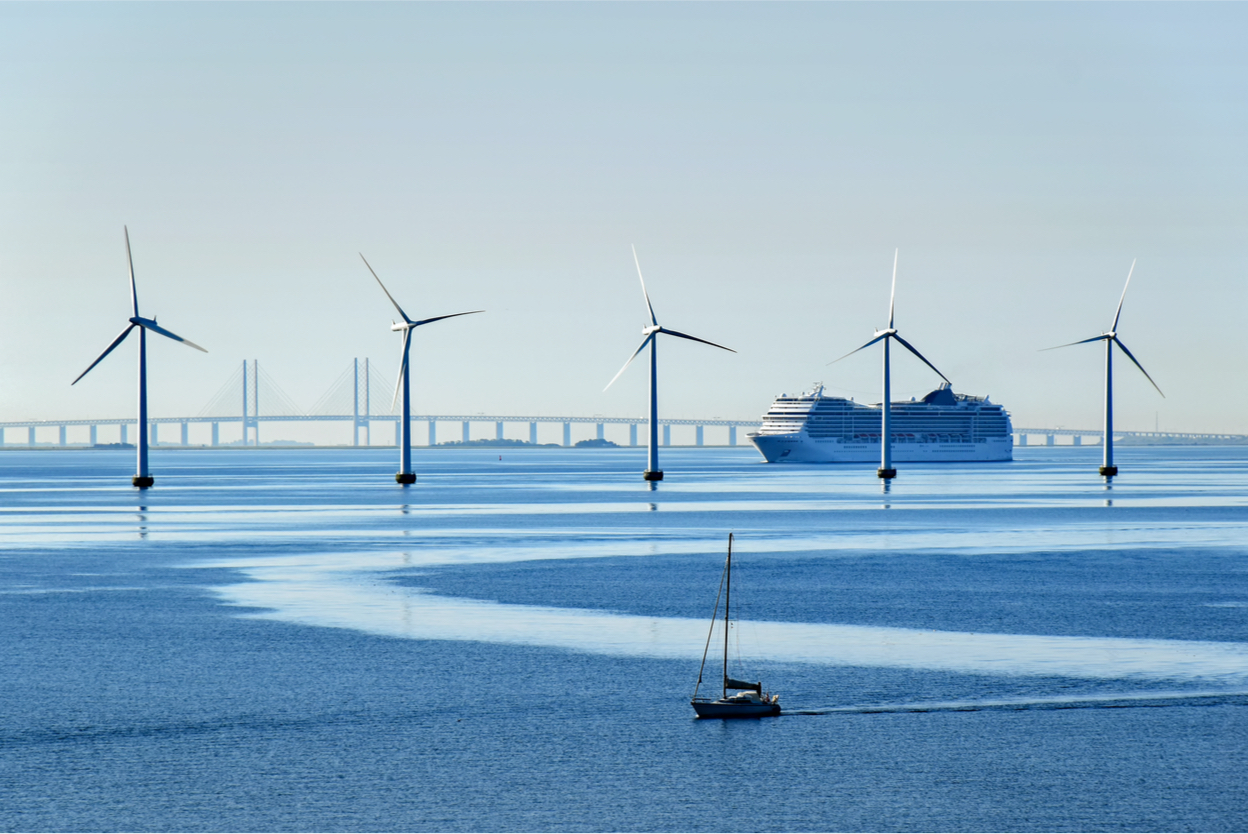By Mike Skorupski
September 17, 2020
Management consulting, strategy, risk management
The wind power industry's journey had begun over one hundred years ago when the first experimental wind turbine was invented. However, the wind power industry has gained commercial momentum only after the spur of the first oil crisis due to the global panic of oil over-dependency. This journey continues today, with some fascinating growth compared with conventional energy sources. The fuel for this growth trend comes from megatrends such as population growth, urbanization, climate change due to human-made pollution, and globalization. Despite the tremendous growth success story, the wind power industry has some tough competition in the marketplace. It needs to prove to the world its sustainability. The macro factors influencing the industry growth come from political, socio-economical, technological, environmental, and legal arenas. Energy policies, rate of urbanization, GDP growth, state of infrastructure, CO2 emissions, and emission reduction schemes affect the whole industry.
Some original equipment manufacturers (OEMs) industry leaders reach their beginnings to the early commercialization of wind power as an alternative energy source. Those industry leaders strive to maintain dominance in the fast-growing offshore segment and sustainable profitability in the somewhat slowing down onshore segment. Everyone in the race has big ambitions to be the leading sustainable clean energy provider for future generations to come. However, the competition is fierce, and no company can afford not to improve its operations and finances to maintain its competitive edge. Everyone at the forefront has been playing this competitive game quite well, winning the hearts of wind energy customers proven by the record new order backlogs awarded to some of the forefront runners recently. However, game-changing factors are threatening the position well-fought not only for forefront runners but also for all race competitors. This game-changing factor is, in fact, the sustainability of energy from wind sources. Wind energy's total recurring and non-recurring costs have to be reduced, inclusive of eliminating reliance on subsidies and grants, especially in the offshore segment. Onshore wind's levelized cost of energy (LCoE) cost continues to enjoy being on par or below par with some of the conventional energy sources given right wind conditions according to Lazard's Insights: "Lazard's latest annual Levelized Cost of Energy Analysis (LCoE 13.0) shows that as the cost of renewable energy continues to decline, certain technologies (e.g., onshore wind and utility-scale solar), which became cost-competitive with conventional generation several years ago on a new-build basis, continue to maintain competitiveness with the marginal cost of existing conventional generation technologies". However, the cost of offshore wind energy is further from that point. If wind energy is to survive, it will most likely be in the offshore arena far from cities and in places where wind conditions are the greatest. Above all, the answer for offshore wind survival will be in radical reductions of capital expenditures (CAPEX) and lifetime operations and maintenance (O&M) costs, combined with revolutionary technological breakthroughs to increase the lifetime energy production output with the ultimate goal to reduce the LCoE.
Since the current technology has some inherent limitation due to ever-increasing torque factors caused by ever-increasing rotor swept areas to increase the energy output, the more immediate answer may lie in the CAPEX and O&M reductions. The aim is to reduce all cost categories making up the total lifetime costs to install and operate an offshore wind farm. However, that's where it gets even more tricky because identifying and managing risks is pivotal in any large infrastructure projects, especially in offshore wind farms. Highly complex non-recurring CAPEX costs such as site development, turbine generator equipment, balance of plant, "installation and commissioning," and lifetime projected recurring costs of wind farm O&M are indeed significant factors in the overall LCoE puzzle. A slight change in any of those cost factors affects the operator's bottom line. In essence, effective risk management becomes not only highly desired but also imperative to support decision-makers in taking the most optimal financial decisions from the onset of the project lifecycle.
A dedicated project risk management authority will drive this process on the OEM side and propose corrective actions. Still, even with the best intentions of managing those risks, an ill-informed decision based on limitations and potential inconsistencies of inputs to cost factors might produce negative consequences that might not be fully reversible if not detected early or even prevented. Thus, establishing and maintaining proper interfaces between project management and enterprise risk management becomes paramount.


